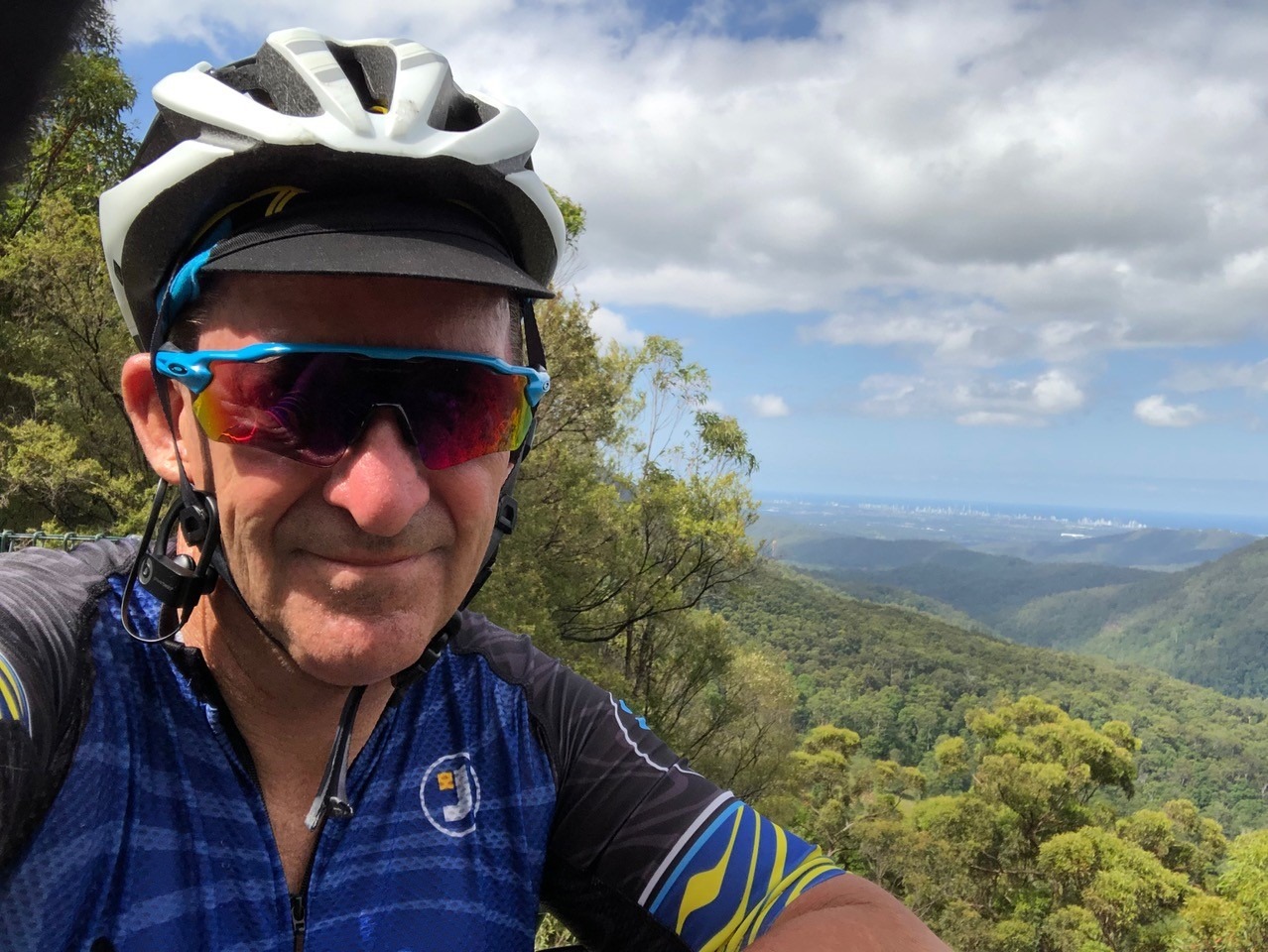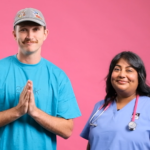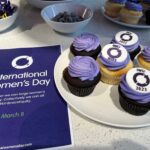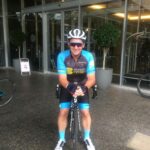
Servier Australia are privileged to share the story of Steve Holmes, one of very few long-term survivors of Cholangiocarcinoma, writing about his lived experience.
Hi, I’m Steve
Hi my name is Steve Holmes, and I am a Cholangiocarcinoma patient. I have been married to my wife Claire since 1989. We have 2 adult children and live in Main Beach on the Gold Coast, Queensland.
I will do my best to compress down what is actually a large-ish story about my brother and I who both received the exact same diagnosis 4 years apart.
2 Brothers, Same Diagnosis
Brother 1
My younger brother was diagnosed (50 years old – 2012 ) with Cholangiocarcinoma, a rare and aggressive cancer of the bile ducts that impacts the liver, pancreas, and many organs in between. His doctors had no knowledge, experience or expertise, or specific treatment plan to respond to his cancer diagnosis. He had no external patient support or resources to help him help himself. While he was determined and willing, he was completely lost and without any meaningful plan, lost his battle 18 months later.
Brother 2
Now it was my turn – diagnosed 2016 at 56 years old with the exact same diagnosis as my brother. Extrahepatic – distal, and fewer than 6 months to live without surgical intervention.
My Life Before the Diagnosis
I am a road cycling tragic, who also loves a little running to keep it interesting. I love routine, discipline, and the all-around fitness that comes from cycling and running, but most of all I love the freedom that comes from aligning all these elements. Cycling keeps me in a good healthy zone of food, thought, and motivation. Over the years I evolved an unofficial daily routine of 5am rides followed by 2 coffees before work, and 2 pinot’s to celebrate and enjoy the Gold Coast sunsets – everything in between is always negotiable!
I will do my best to compress down what is actually a large-ish story about my brother and I who both received the exact same diagnosis 4 years apart.

Symptoms Pre-diagnosis
While participating in a weekly Saturday morning coffee ride I experienced a sudden and severe onset of fatigue that forced me to peel off the group ride and head home. The fatigue continued to worsen and my appetite also dropped right off. Within a few days, my stools had changed to a very light pale grey, the whites of my eyes became yellowish and the skin on my hands was persistently itchy. My wife Claire decided I needed to see a doctor and booked an appointment for the following morning.
Fast onset of fatigue, loss of appetite, pale stools, yellowing eyes, and itchy skin.
My First Doctor’s Appointment
After a very brief discussion about my symptoms, my doctor suggested that a blood sample was needed, so she drew down a couple of vials to send to the lab.
The next day my doctor’s office contacted me to come back in immediately as my liver enzymes were elevated. She immediately booked me in for an ultrasound scan that same day. The ultrasound revealed “something” that was not clear, so I was asked to remain and have a CT Scan to gain a clearer view of what they were observing. The CT Scan revealed a small stricture in my bile duct and I was then booked in for an (ECRP 2) days later (I think it was Friday by then).
Blood test, Ultrasound, CT Scan, Bile Duct Stricture.
ECRP
The ECRP confirmed one small stricture but could not confirm if benign or cancerous, but did recommend that I engage a surgeon to remove it as soon as possible just to be on the safe side. It would be fair to say that I was a little less concerned as the ECRP surgeon did not say it was cancer, and yes in reflection that was my mind protecting me from a dark place.
Back to My GP
We went back to my doctor to ask for guidance on choosing the right surgeon for this type of procedure, which in my mind was a minor resection of a small stricture ie, not a tumour.
We chose a surgeon and the ECRP results were forwarded to them and an appointment was made to discuss them the following week.
Stricture confirmed, no mention of the word tumour – Surgery recommended.
The Diagnosis
The appointment: Claire and I went to the surgeon’s appointment expecting to hear about a small procedure, but instead were told that I had cancer and only had 6 months to live without a major multi-organ surgery called a “Whipple.” This news was so devastating, I instantly fell into a deep
dark disorientating abyss that I never knew existed. As I composed myself, lifting the head up out of my hands, my eyes met Claire’s welled-up eyes, we had no words, we did not need them we had each other’s strength. We left that office in shock, empty and numb, everything was a blur as we walked like zombies back to the hospital car park. When we were in the car it triggered us both as we fell into uncontrollable crying for a long extended period.
After the tears subsided we both began to focus on something the surgeons had said, words that gave us a sliver of hope, the surgeon said that not many patients have the opportunity of a Whipple surgery and we view this as a potentially curative surgery intervention. We had been abruptly shunted into a parallel lane next to life, stripped of our future dreams, visions, and aspirations in a heartbeat. But we still had one hope rope to hang on to, so that became our focus our next stepping stone back to good health, family and life.
It’s Cancer – Whipple Surgery – Parallel Lane.
Bridging the Diagnosis Abyss
The feeling of being diagnosed with an unexpected and life ending cancer is not an experience that anyone could ever prepare for, nor could anyone know how they will respond. We were thrust into a world of foreign languages, terminologies, and statistics. Caught in a doom loop where the average life expectancy is just 6.7 months and a 5-year survival of less than 8%.
As I very quickly declined, Claire began searching globally for survivors and
information on Cholangiocarcinoma. She could not find any survivors, and information was scarce and outdated. Cancer organisations had little knowledge about this cancer.
My brother’s strategy was to fight it head-on but neither he or his medical team had any knowledge or effective response plan. I had to find a better way, and all I could think of was to get alongside ‘Cholangio the
Beast’. To walk alongside and learn its ways, perhaps negotiate a better deal. That was how I pictured myself and yes it was a little bit of an Alice in Wonderland approach which I later learned is a real thing.
Claire and I realised that my biggest obstacle was, we did not know what we did not know, yet must, if I was to have any chance of survival.
If I could offer something helpful to a newly diagnosed patient reading my story, it’s this:
You can never prepare for such a devastating diagnosis, but what I can say is it will expose you to your innermost self. This is a place storing your unused potential and willingness, invisible and transformational strengths tucked away unseen by your cancer or doctors. They cannot be measured by science and statistics, yet they are at your full control and no one else’s, all you need to do is step aside – get out of your own way to allow them to rise up and lead you beyond what you consciously think you are capable of.
We also did not know what we did not know, yet must, if I was to have any chance of survival, so Claire began building a bridge across the cancer abyss to a pathway beyond the diagnosis.
Head to Part 2 to read about Steve’s treatment.



